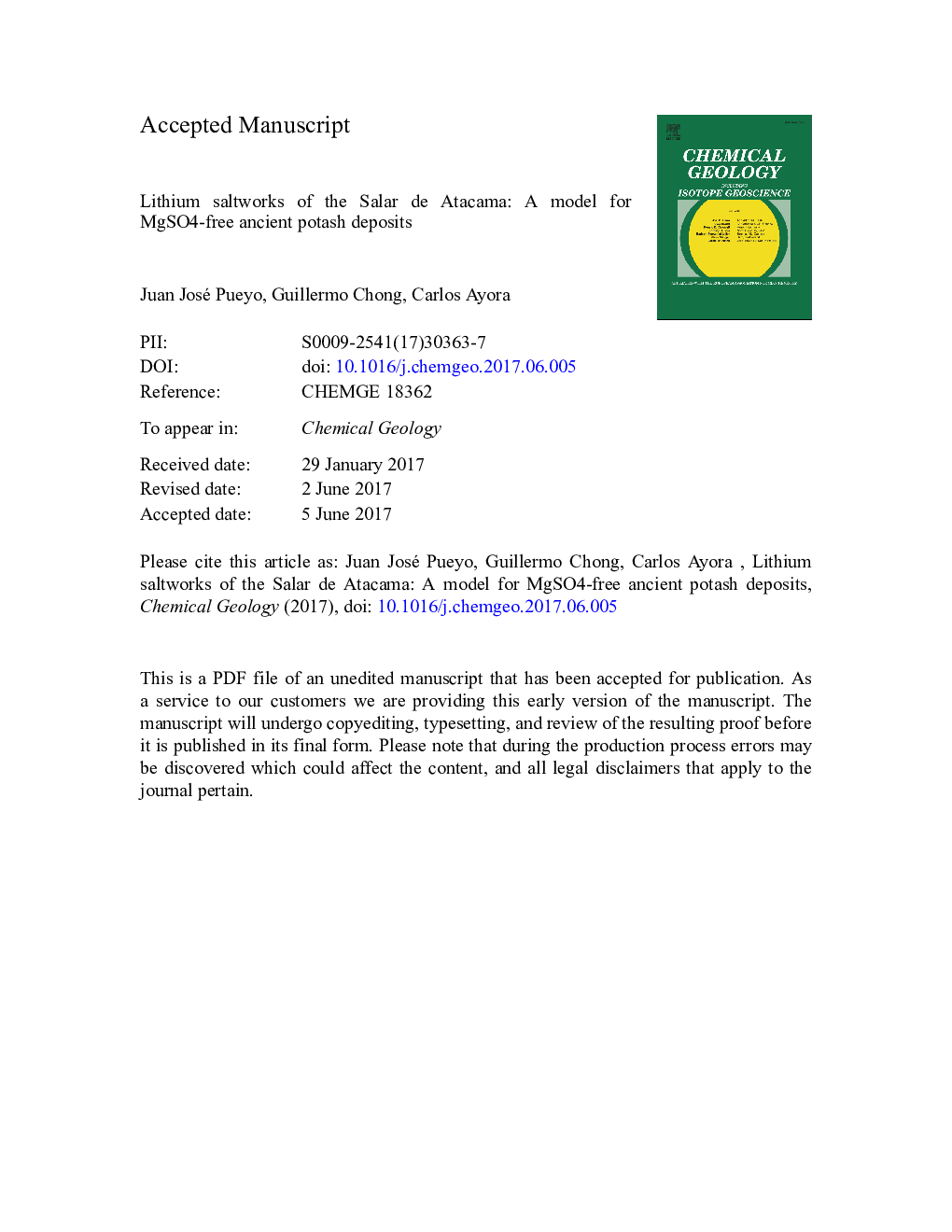| کد مقاله | کد نشریه | سال انتشار | مقاله انگلیسی | نسخه تمام متن |
|---|---|---|---|---|
| 5782827 | 1637508 | 2017 | 57 صفحه PDF | دانلود رایگان |
عنوان انگلیسی مقاله ISI
Lithium saltworks of the Salar de Atacama: A model for MgSO4-free ancient potash deposits
دانلود مقاله + سفارش ترجمه
دانلود مقاله ISI انگلیسی
رایگان برای ایرانیان
کلمات کلیدی
موضوعات مرتبط
مهندسی و علوم پایه
علوم زمین و سیارات
ژئوشیمی و پترولوژی
پیش نمایش صفحه اول مقاله

چکیده انگلیسی
Potash basins similar to those in the geological past no longer exist at present. There are only hypersaline lakes such as those in the Tibetan Plateau where carnallite [KCl·MgCl2·6H2O] precipitates. Given that the purpose of common saltworks is to obtain NaCl, the halitic stage is not exceeded. By contrast, saltworks extracting lithium by solar evaporation reach more advanced stages of brine evolution and saline precipitation. In the Salar de Atacama saltworks, with a relative humidity commonly below 30% (monthly average), salts precipitate following a sequence of halite [NaCl], sylvite [KCl], carnallite and bischofite [MgCl2·6H2O] and display a useful model of evolution similar to that which gave rise to MgSO4-free potash deposits in the past. Prismatic-acicular gypsum [CaSO4·2H2O], the main accessory mineral, is transformed into a less hydrated calcium sulfate, probably anhydrite [CaSO4], during carnallite precipitation. Mineral crystal size and annual sedimentary thickness of each paragenesis are compared with those in ancient potash deposits. The behavior of sylvite and carnallite as cements is observed at the onset of their precipitation in ponds where both minerals coexist with previous halite. Millimeter cyclicity due to day-night thermal variations is observed in these saltworks, whereas cm- and mm-cyclicities have been interpreted in ancient sites as annual (regular) and intra-annual (irregular), respectively. Conditions similar to those existing at the Salar de Atacama were necessary to preserve carnallite, which is commonly the most evolved mineral in the ancient deposits. The development of potash deposits in the South Pyrenean Foreland Basin and the Rhine Graben, near the Eocene-Oligocene boundary, is attributed to global aridity and cooling and to the basin restriction associated with a decrease in the ocean level caused by the spread of the Antarctic ice cap.
ناشر
Database: Elsevier - ScienceDirect (ساینس دایرکت)
Journal: Chemical Geology - Volume 466, 5 September 2017, Pages 173-186
Journal: Chemical Geology - Volume 466, 5 September 2017, Pages 173-186
نویسندگان
Juan José Pueyo, Guillermo Chong, Carlos Ayora,